I’ve been traveling on the island of Newfoundland for the past few weeks, seeing world-class geology, but not having a lot of time to delve into blogging about it. I have been posting a few pictures each day on Twitter, though, including this one:
OK, geoTwitter super sleuths, what do you see here? pic.twitter.com/SSIqljzj99
— Callan Bentley (@callanbentley) July 10, 2019
There’s a lot to see there. It’s from a place called Sandy Cove, specifically a headland called “Greenings Point:”
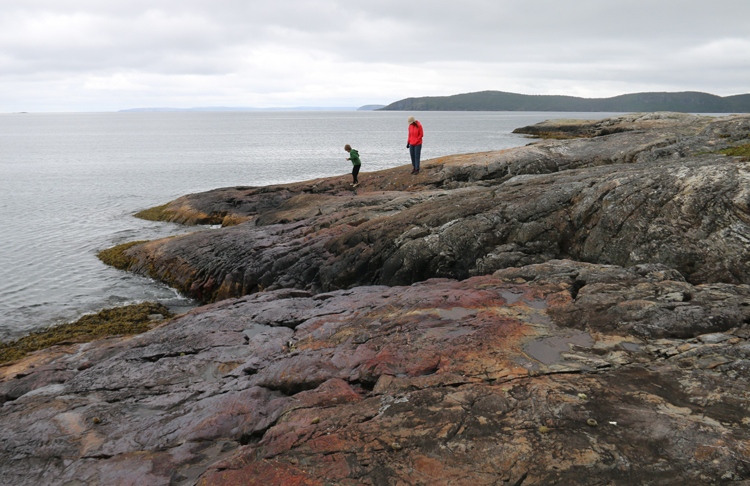
This is a site (#63) from an excellent map + guide for the geology of Newfoundland, called Newfoundland & Labrador Traveller’s Guide to the Geology: Guidebook to Stops of Interest, by Stephen Colman-Sadd and Susan Scott (first published in 1994, reprinted in 2003). I was sent a copy of this invaluable guide by Tim Sherry, and I’m very grateful for its guidance, for I doubt I would have dropped $100 for it on Amazon on my own. Thanks Tim!
Okay, back to the rocks! Here’s a blog-hosted version of that same image:

To me, the key elements of the outcrop are bedding and cleavage. There is a variable amount of clay in the beds, resulting in variable development of cleavage. There is a prominent contorted bed in the middle of the outcrop. And both cleavage and bedding are highlighted by differntial weathering of the outcrop in its sea-spray-blasted coastal location.
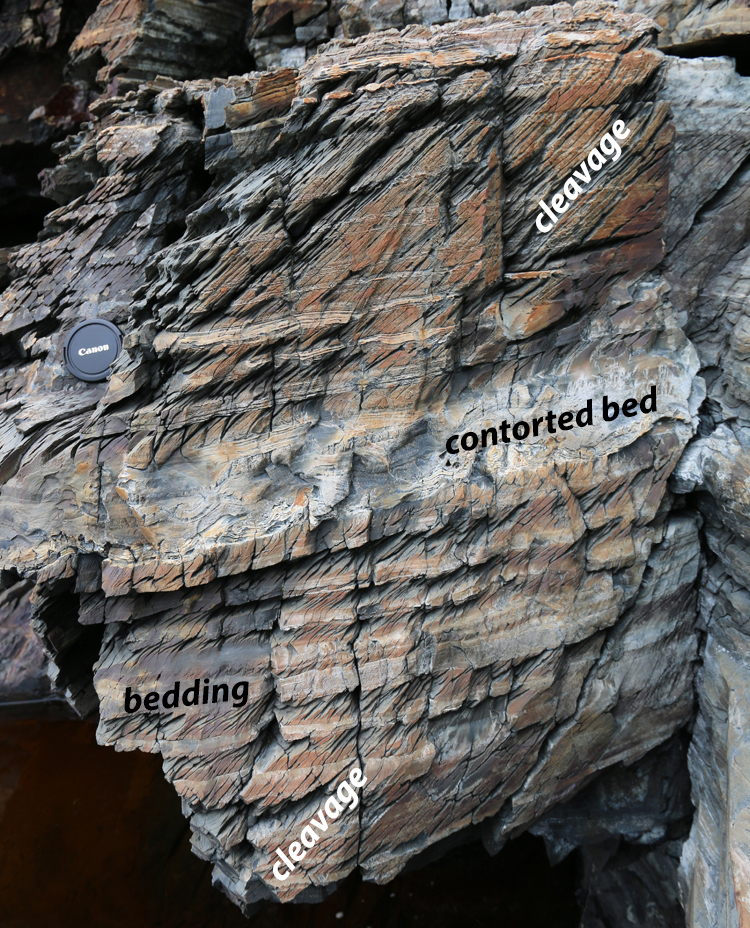
Overall, contorted bedding is what drew me to this site: the Proterozoic sedimentary rocks here are interpreted as a massive submarine slump deposit, mixing mud and sand and gravel and beds of each of those sediments into a big chaotic jumble. Later, Appalachian mountain-building overprinted the whole mess with a penetrative cleavage.
Let’s start our examination with the slumpy aspects of the site…
There is a diamictite of big bits surrounded by finer stuff:


A boulder of “mixite”

Mudchip-rip up clasts surrounded by coarse sand and grit:
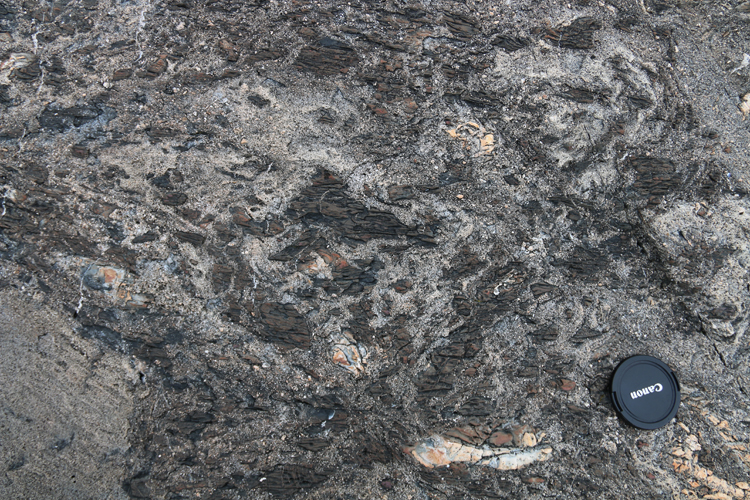
A seam of conglomerate stretches down through this next photo, surrounded on either side by sandstone, with a huge block of (white-weathering) mudrock :
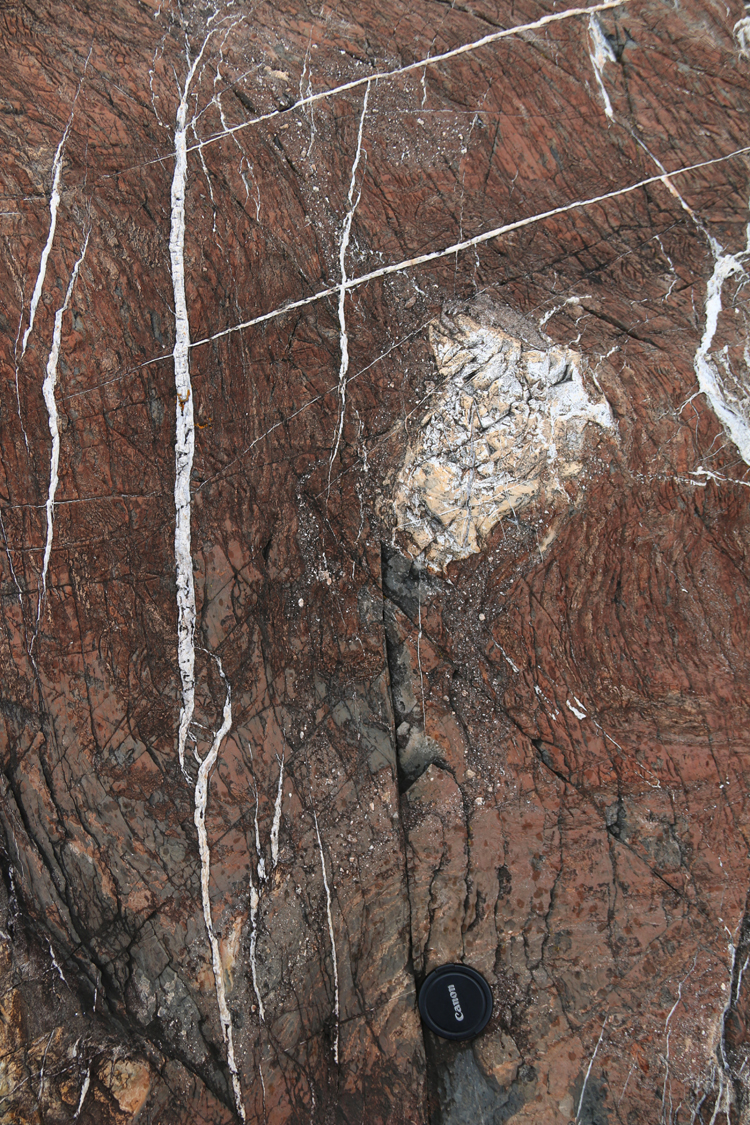
Note that there are no clasts of igneous or metamorphic rock here. This is not a glacial tillite, bringing in material from all over. Instead, it’s just different varieties of clastic sediment. That, and the folded bedding suggest soft sediment deformation and an overall submarine slumping interpretation for the genesis of these rocks:
One curious aspect of the site is that the mudrock weathers white, though on a fresh surface it’s almost jet black. You can see that in this next photo (in the lower right), which shows coherent beds of mudrock on the flanks of a central blob of diamictite (“mixtite”) which contains a few folded slabs of mudrock (presumably ripped off one side or the other – I’m not at all confident which way is “up” in this mess):
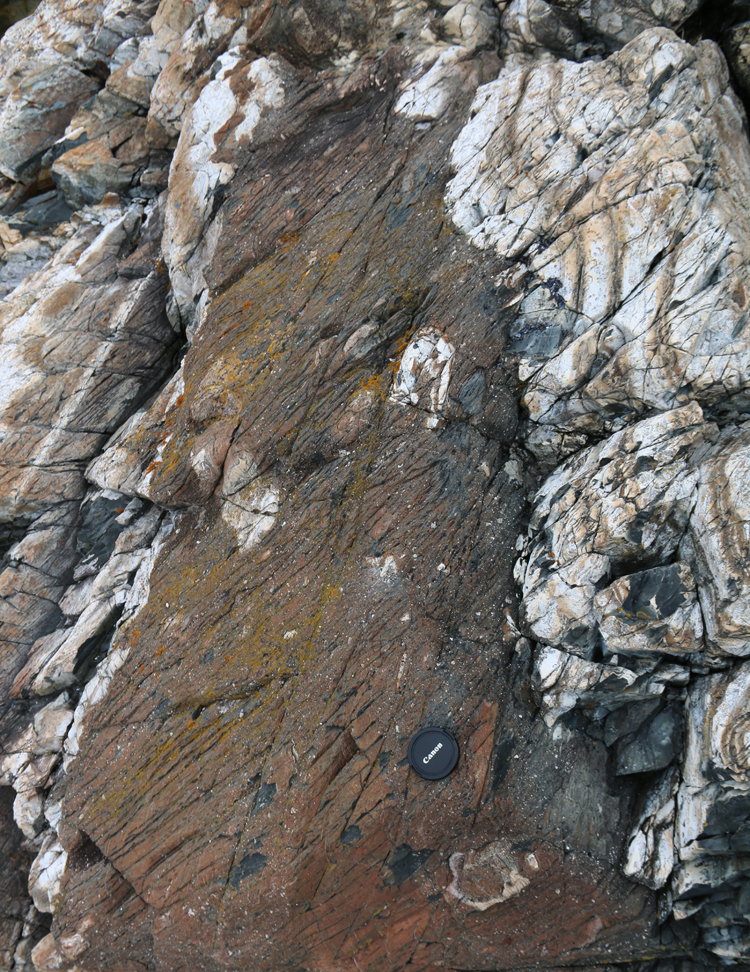
On the scale of beds, consider this outcrop:

Relatively undeformed beds there overlie relatively deformed ones. This deformation is not tectonic in nature — it’s ‘soft sediment deformation,’ which is to say the folding and sqloorping* was post-deposition, but pre-lithification.
* not a real word, but it’s got onomatopoeia going for it.
Another fine example of folding:
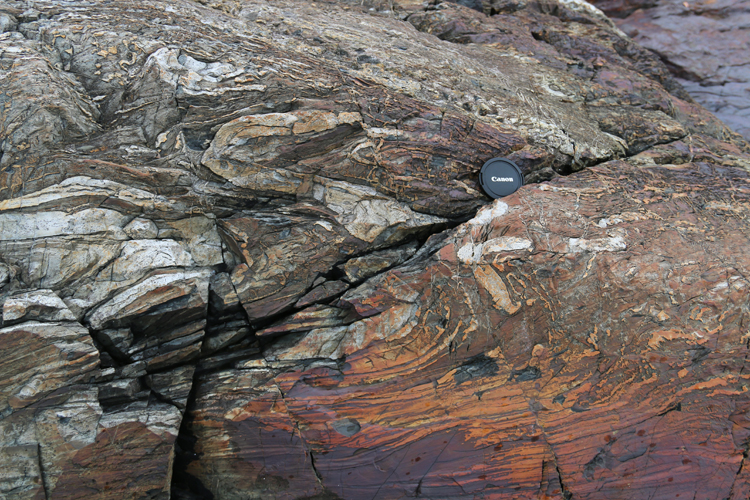
A thinner example of a convoluted bed, so thin that the convolutions (± subsequent erosion) have separated the bed into distinct segments:
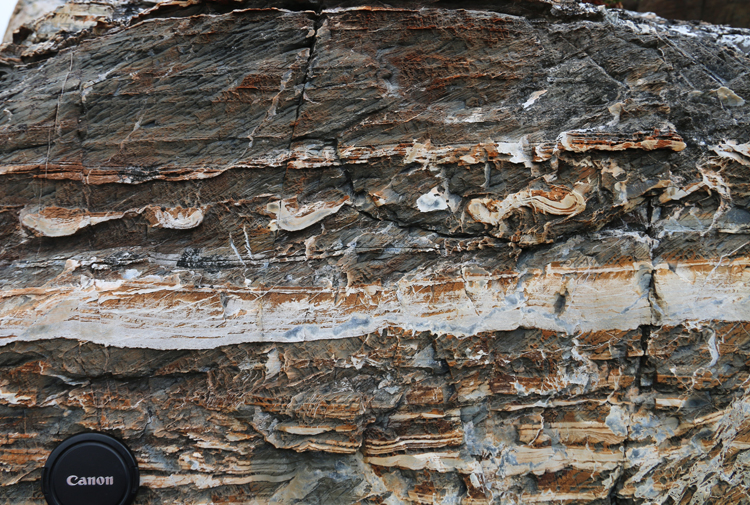
So we’ve got mud and silt and sand and gravel all being deposited somewhere in proximity to one another, and later slumping of these sediments underwater shuffles them up on both the grain-by-grain and the bedding scale, depending on where you look.
Here’s a coherent bed, folded up and surrounded by chaoticly sorted diamictite:
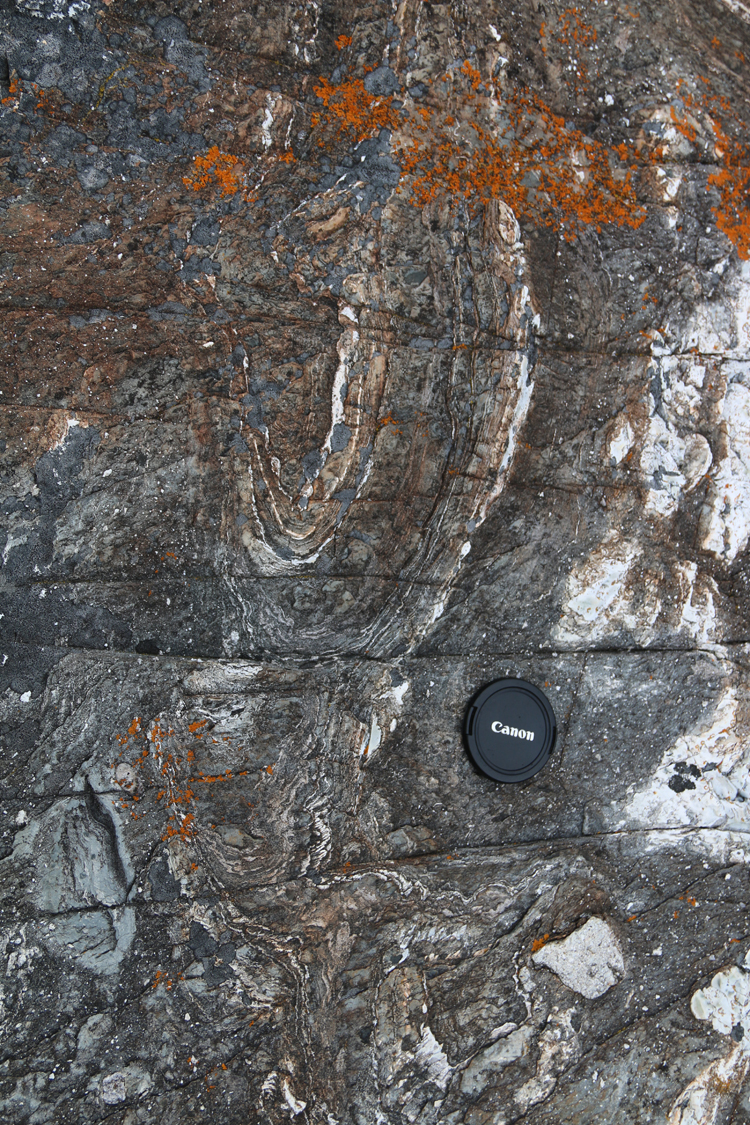
Here’s a similar spot where you can see big slabs of sandstone folded up and mixed in with grit and gravel:
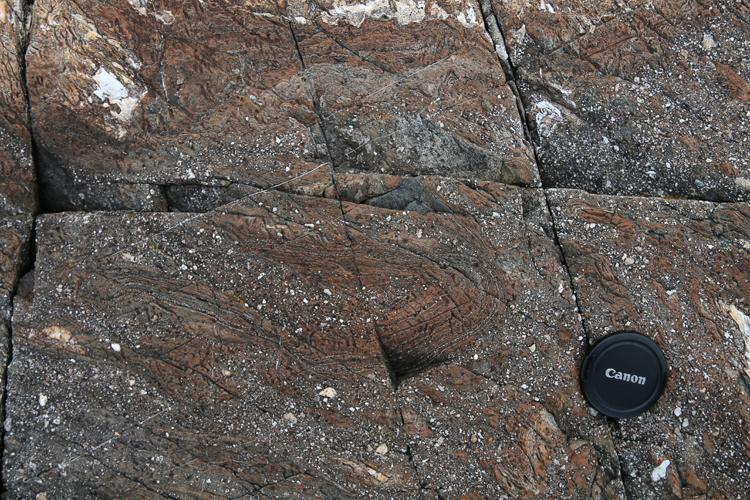
The most spectacular example of contorted bedding I saw at the site was this one:
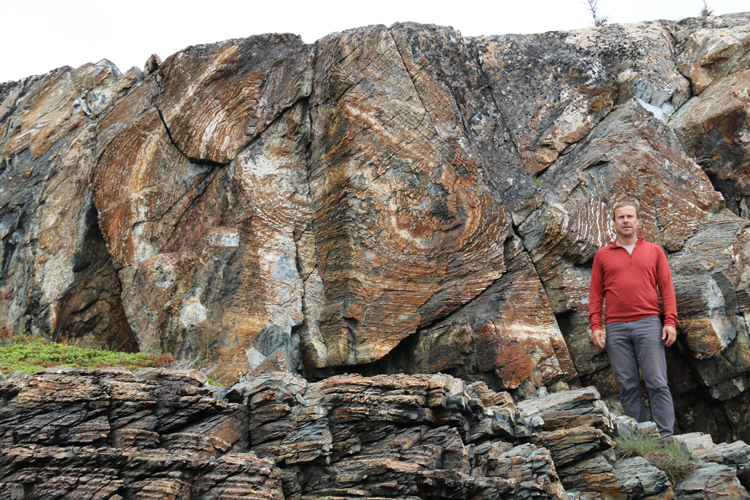

Note the flat-lying bedding at the bottom (easy to miss it, given the glory of the jellyroll above!).
Here are a set of coherent beds shuffled into a few different orientations, with an upper curved package capping a more steeply dipping thick lower package:

A big overturned antiform:

Annotated:
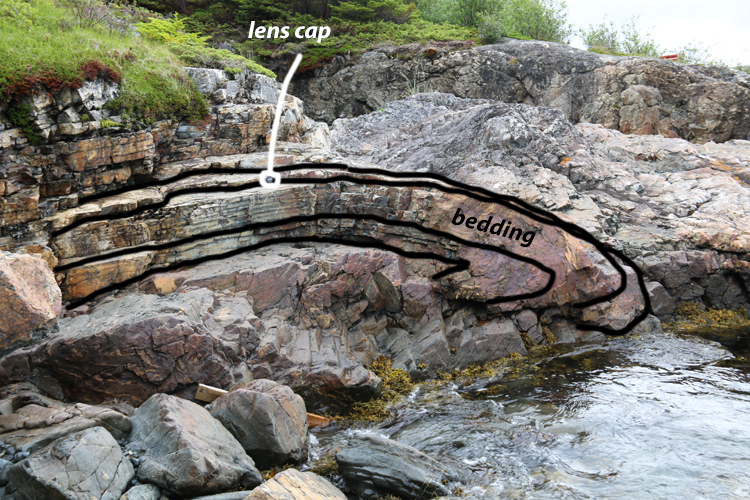
Here’s a nice view showing three packages of sediment: a lower, darker one that’s more or less horizontal and in its original form, a ~20cm (~1 foot) thick contorted bed that weathers white and crops out in a blocky pattern, and a thick brownish upper package showing serious internal deformation:
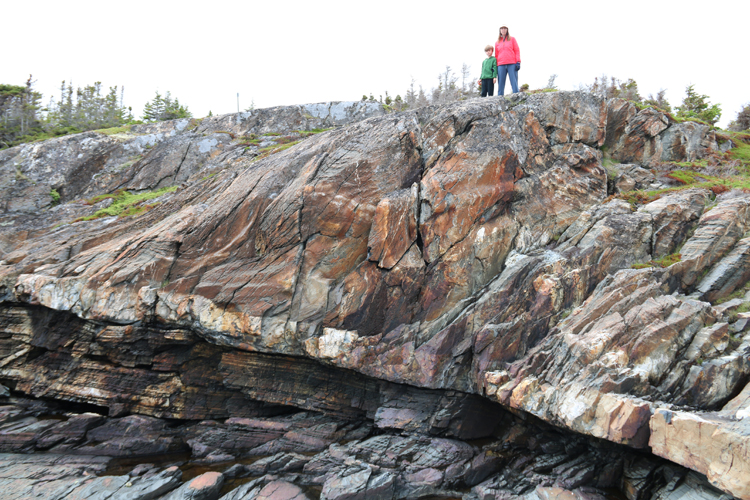
Okay, so that’s the sedimentary scene. But another prominent aspect of the site was the cleavage, a tectonic structure superimposed upon pre-existing sedimentary features during later Appalachian mountain-building.
Here’s a Z-fold with cleavage running cleanly through the whole thing:
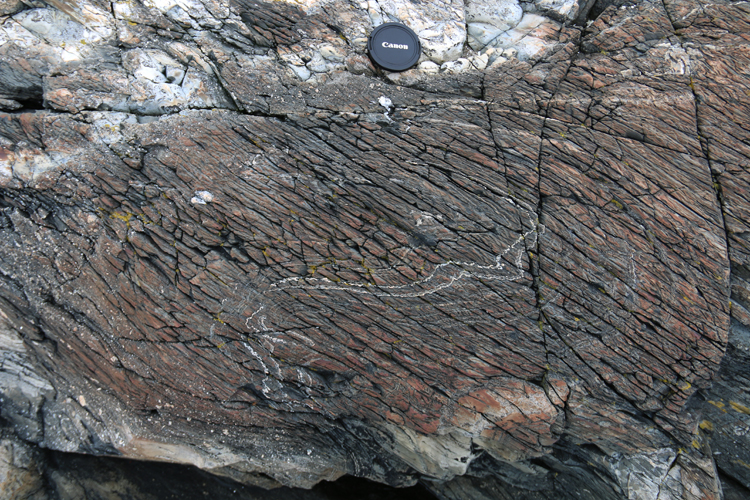
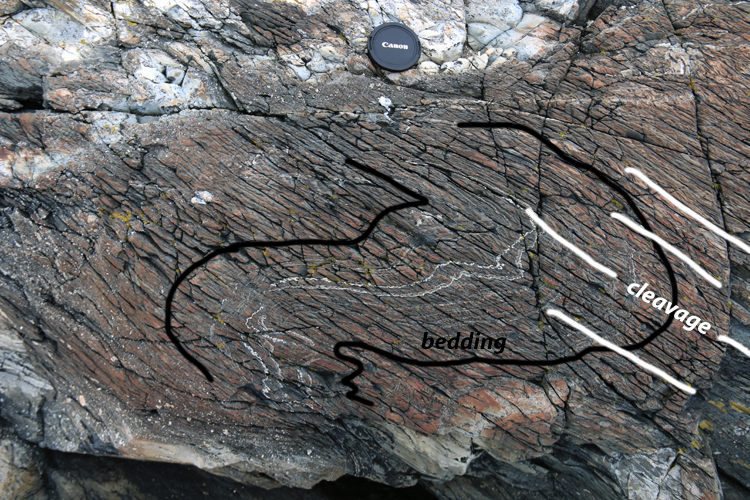
The trace of the cleavage and the bedding could both be really enhanced by a bit of seaside weathering:

Closer-in:

Here’s a neat spot that shows clasts of mudrock surrounded by sandstone, but only the mudrock is discernibly cleaved:
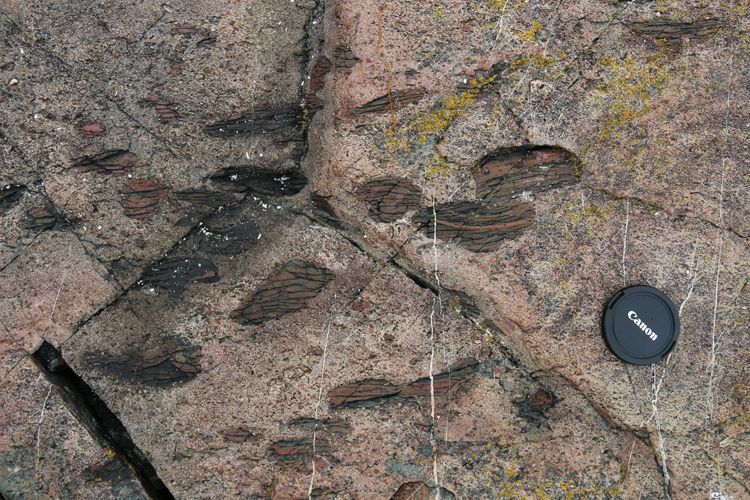
I should also mention: there was also a substantial igneous dike at the site:

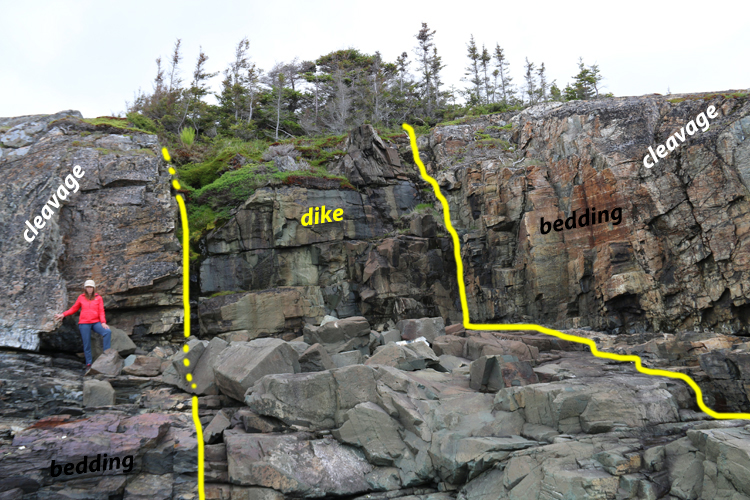
Another perspective (from the opposite side), though lacking the same lovely sense of scale:
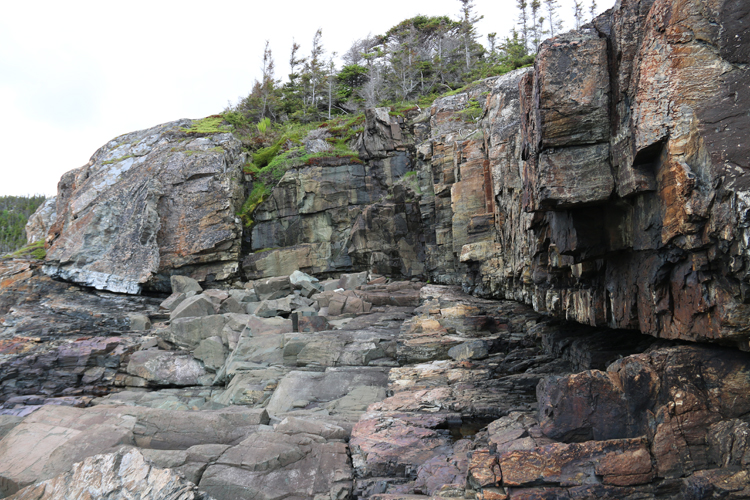

The rock making up this dike was a greenish sort of basalt, hosting a few amygdules:

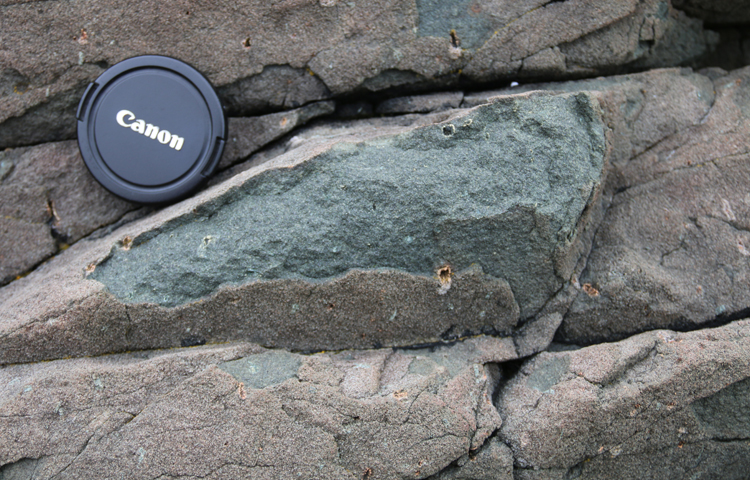
Finally, there was a chasm that kept us from exploring further along the outcrop, but its deep declivity hosted waves that impacted at the back end and echoed/reverberated in the deepest tones through the rock and air – a sound felt as much as heard. Here is a look into the abyss —
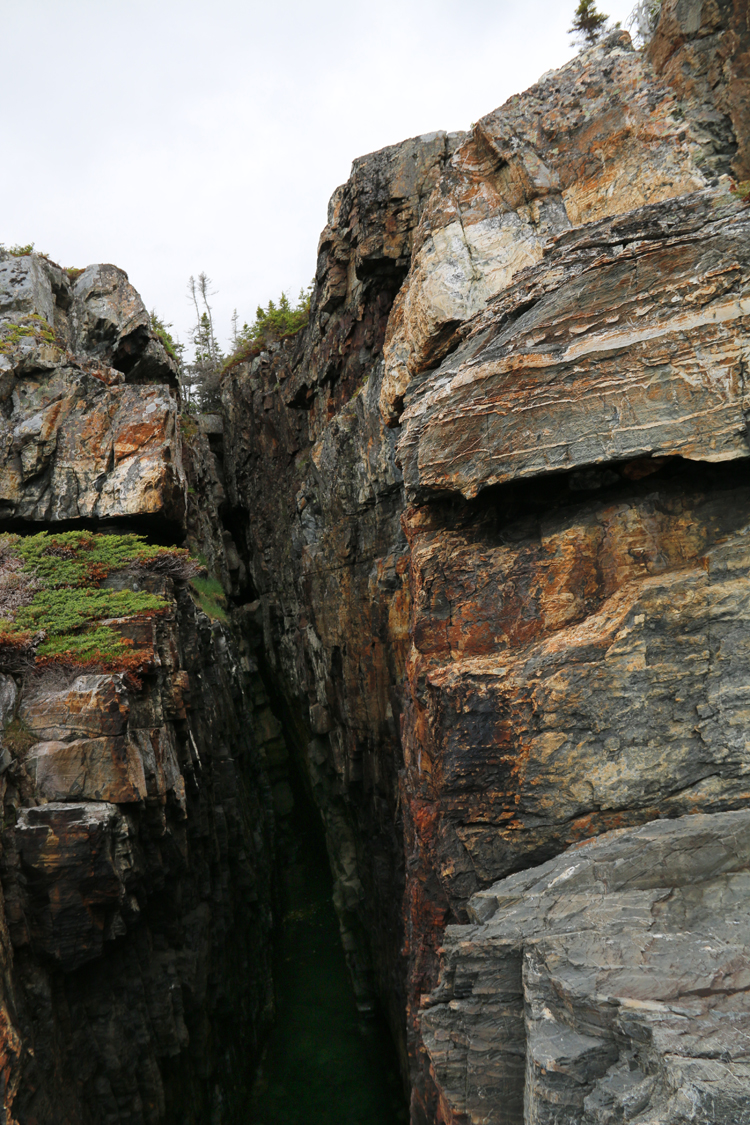
…Stare not too long into it, lest it stare into thee…
I think that about covers it! Thanks for joining me in exploring this super cool outcrop.

Glad you enjoyed some of the Provincial geology.